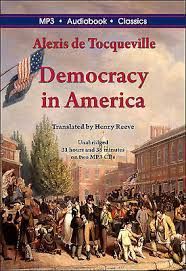The Application of Management as a Liberal Art
PUBLISHED:
Peter Drucker wrote extensively about the functions and responsibilities of managers and of the principles that could help advance organizational performance. In his works, Drucker inferred that individuals who comprise the organization ought to cultivate self-knowledge, self-awareness, and develop their skills through application.
We first learn about the concept of management as a liberal art in Drucker’s book, The New Realities. In this text, Drucker refers to management as a liberal art: “Management is thus what tradition used to call a liberal art - ‘liberal’ because it deals with the fundamentals of knowledge, self-knowledge, wisdom, and leadership; ‘art’ because it deals with practice and application. Managers draw on all the knowledges and insights of the humanities and the social sciences - on psychology and philosophy, on economics and history, on the physical sciences and ethics. But they have to focus this knowledge on effectiveness and results.” (Drucker, 1989)
Drucker argued that individuals in organizations must recognize that human nature is imperfect, but through careful observation and contemplation, and lots and lots of practice, decision making can be improved. Over time, as people in organizations practice management ethically and responsibly, the community at large benefits from the decisions made in responsible, socially-conscious organizations.
Management as a liberal art is a concept that embodies a philosophy - one which rests on the elements of knowledge, self-knowledge, wisdom, and leadership. This implies that an individual has the potential to grow and develop into a more effective manager and decision-maker as long as the person takes time to reflect, develop skills and knowledge, and continually acquire experiences that will enrich her or his perspective about effectively leading people in the organization.
However, Drucker recognized that self-interest often disrupts and in the worst cases, impedes and restricts the efforts of others. As such, the individual must develop the ability to observe what is occurring within the organization and outside of it, but also develop self-awareness and the ability to reflect on his or her own behavior, and the decisions that are made. This includes analyzing how decisions may influence the actions and behavior of others.
It is through self-reflection and awareness that we can take note of what has worked, what did not, and what we could do differently the next time another situation arises. An individual can develop emotional intelligence, to use Daniel Goleman’s concept. And in the context of management as a liberal art, this is what we would refer to as self-knowledge.
An individual can become more effective in supporting the growth and development of others, as long as the person learns to appreciate people for who they are and allow them space to be themselves. But to do this, the individual must learn to listen to others, respect them, and recognize their concerns and needs. It is also important to leverage people’s ideas and suggestions to help find solutions. This is an important assumption under management as a liberal art.
Another key element of management as a liberal art is the notion that the individual must build knowledge. As such the individual must actively seek information, data, facts and stories that can help augment knowledge. Moreover, we can enhance our managerial skills and decisions by applying a transdisciplinary perspective to solving problems.
Using a transdisciplinary perspective provides the individual with an integrated, more holistic perspective that aggregates different points of view from across the arts, humanities, and science. Drucker posited that we can learn from reading history, philosophy and economics, and that the reconciliation of ideas from multiple disciplines can be beneficial to determining the best course of action. Drucker suggested that the careful consideration of differing alternatives and downstream effects, contingencies, and potential outcomes, would enhance decisions and enable the individual to become a more effective decision-maker.
According to management as a liberal art, it is important that we consider how our actions will influence others and that we take responsibility for our actions. Management as a liberal art posits that people define themselves (and serve society) through responsible action. This means that effective managers will act responsibly and ethically, and use their status and power to advance the well-being of the organization and its people. This infers that the individual will act with the best interest of the organization (and its stakeholders) in mind. Using good-judgment and having insight and an improved understanding of situations and contexts is what we would refer to as exercising wisdom.
In order to engage people and build better organizations, and ultimately contribute towards what Drucker referred to as a ‘functioning society’, it is vital that we treat all people within the organization with respect and dignity. And that we help people grow and develop and find meaning in what they do. This is how great organizations are built. This is what we would call leadership.
And leaders within the organization must be aware that things change and that some things must be changed, and others kept. This means balancing change and continuity and recognizing which process or activity needs to be revamped, and which other best practice needs to be preserved.
Management as a liberal art is rooted in practice and application, in self-reflection, in treating people with dignity and respect, and in using a trans-disciplinary lens to help improve decisions. It takes time to achieve results and build great organizations, but it can be done. And organizations whose managers are able to practice and apply, and continuously reflect and learn from their actions, are more likely to help build a better community and a thriving functioning society.
References
Drucker, Peter F. (2003) A Functioning Society (Routledge, London and New York)
Drucker, Peter F. (1989) The New Realities: in Government and Politics, in Economics and Business, in Society and World View (New York: Harper & Row)
Goleman, Daniel. (2007) Emotional Intelligence. 10th ed., Bantam Books.





